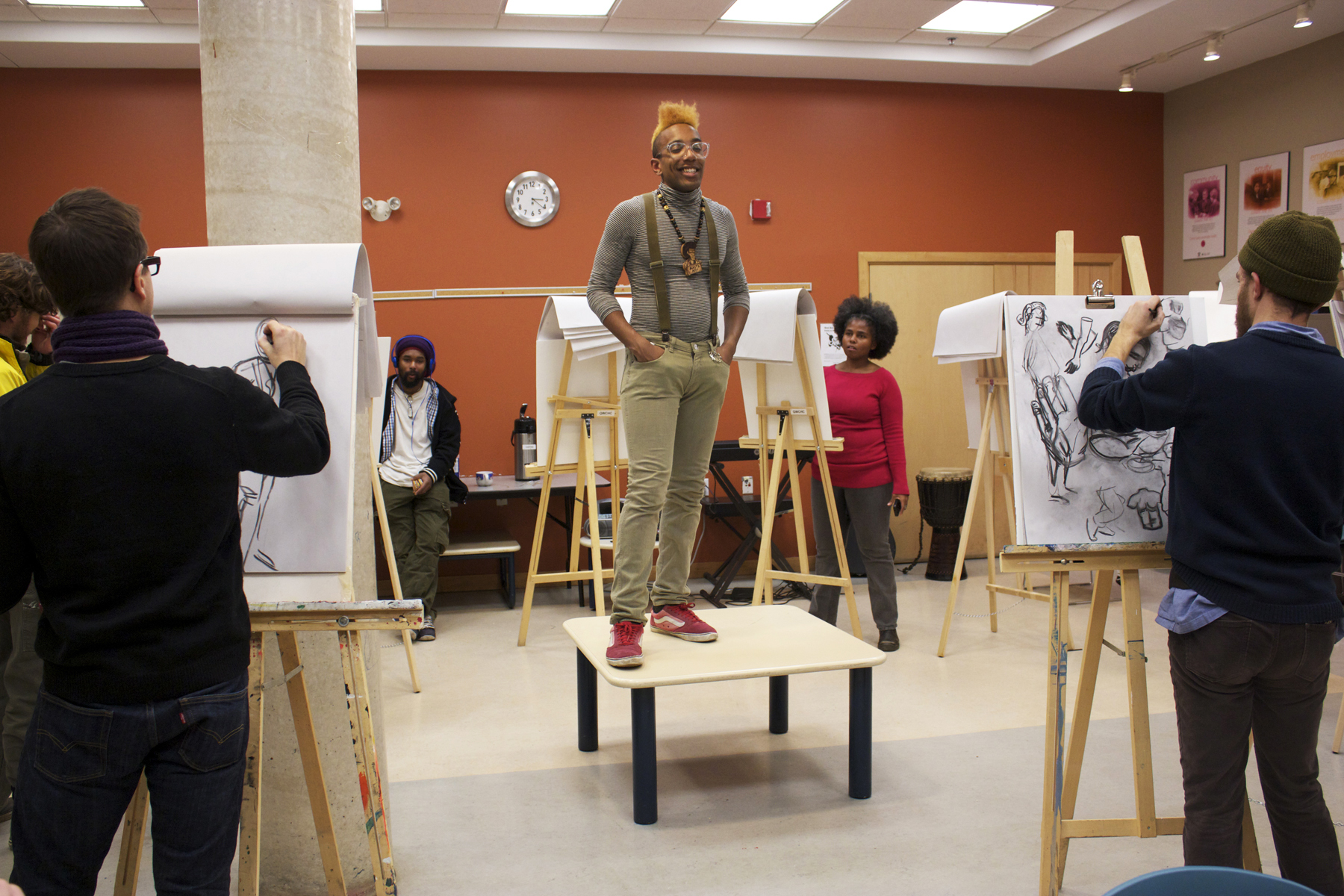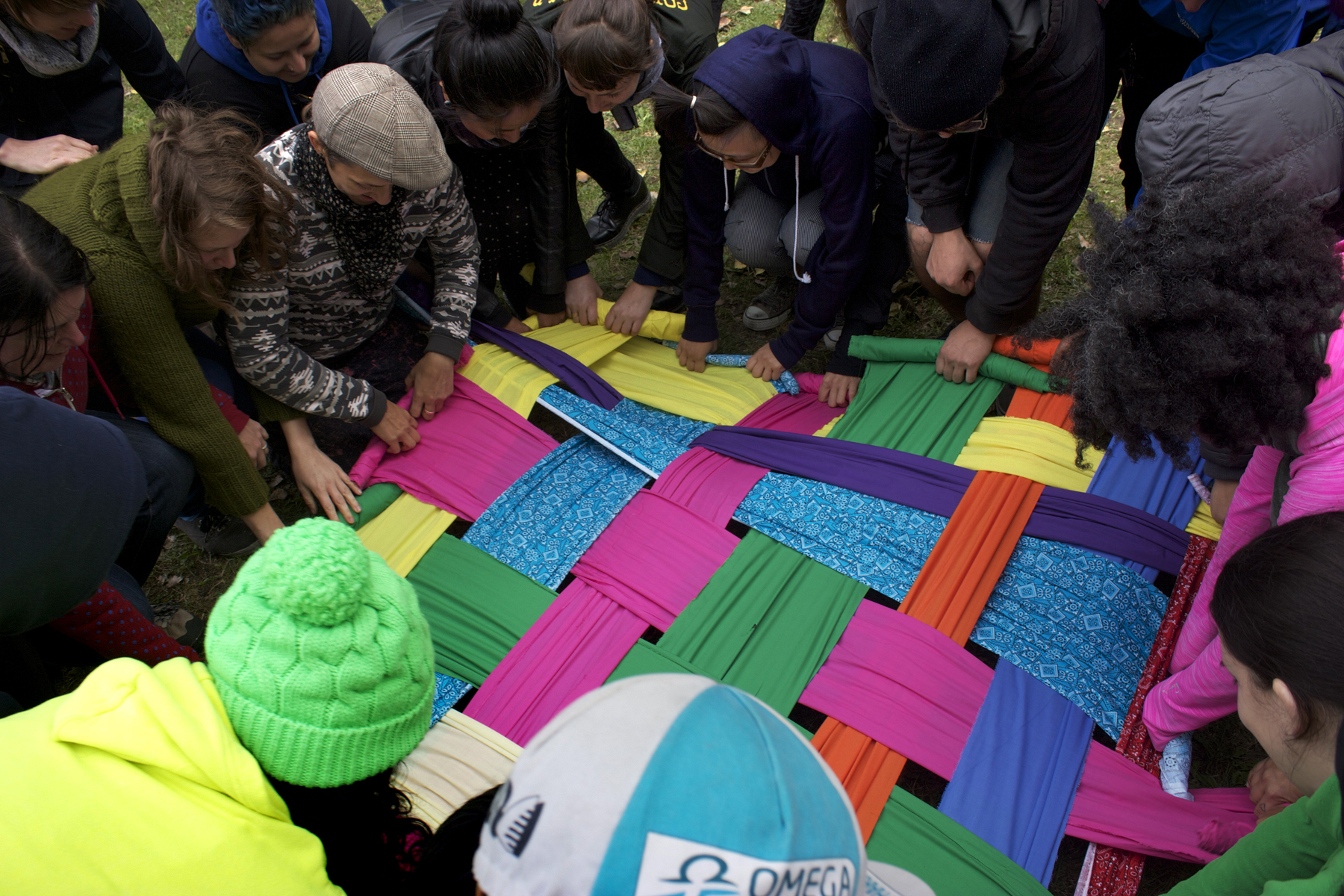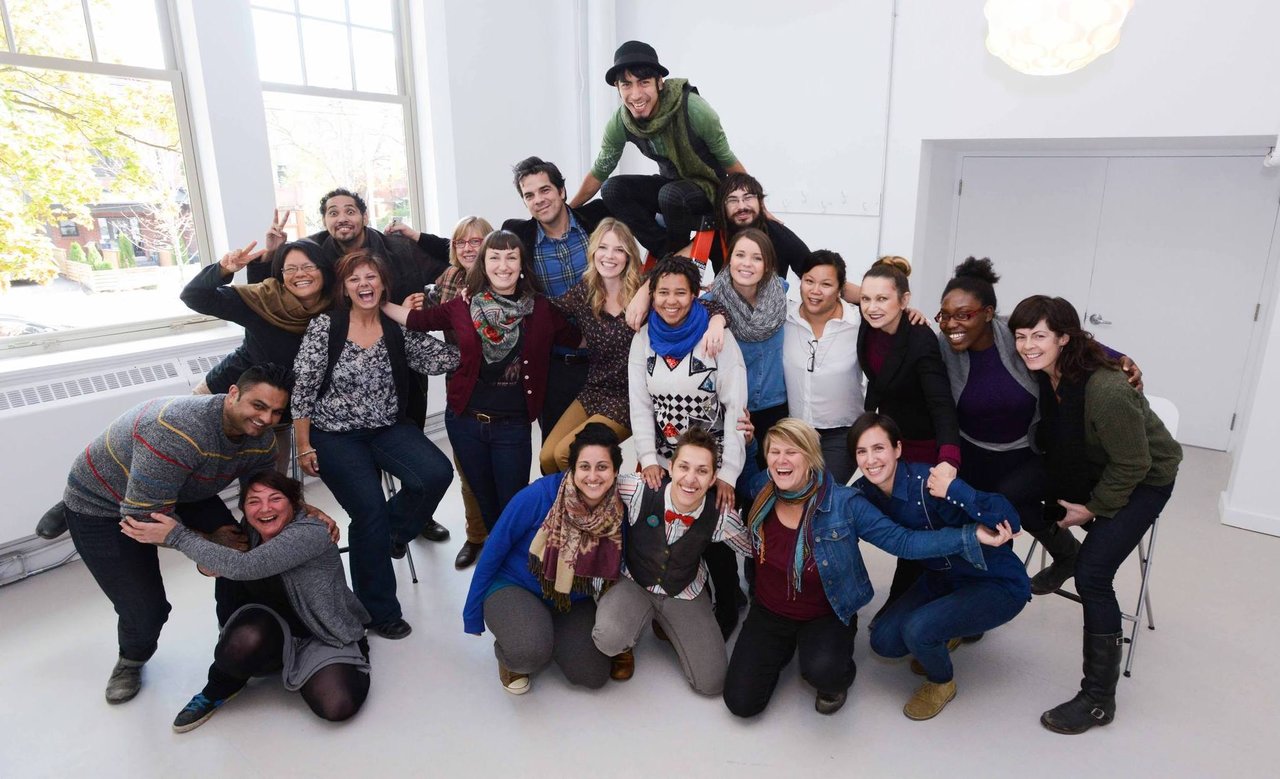Interview with Rudy Ruttimann (R.R), Executive Director of SKETCH by Ella Gorevalov (E.G)
SKETCH is a community art organization engaging Toronto’s homeless and marginalized youth. It provides studio spaces to participate in a variety of activities such as textile art, culinary arts, music production, dance, theater, digital media, printmaking and fine arts. May, 2014 marks the completion of construction of SKETCH’s new 7,500 square-foot studio space in the heart of Queen West at 180 Shaw Street. Rudy Ruttimann, the Executive Director of SKETCH, gives us a tour of the new facilities and tells us about how after 17 years in Toronto’s art scene, SKETCH is ready to move on.
 The entrance at 180 Shaw Street. Photo: Carter Brown
The entrance at 180 Shaw Street. Photo: Carter Brown
E.G: SKETCH is an organization which has spent almost two decades breaking through a mold of community partnership in the arts by starting on a grassroots level to target those who typically do not have access to art. Can you tell us about the history and the roots of SKETCH; how did the initiative grow to be what it is now?
R.R: It started all as a small pilot project at the Yonge Street Mission. Artistic Director, Phyllis Novak, a graduate of York University’s theater degree program, started SKETCH in 1996. She had a real interest in youth and a passion for art, so she was volunteering at the Mission. It was there that she came up with the concept of using art to engage young people who were living with poverty and facing immense social barriers. She created a three-day art festival, called the Fix Festival, with the young people she had met at the Mission. It involved a parade down Yonge Street and some workshops in an old empty factory on Lakeshore Blvd.
 An activity room. Photo: Carter Brown
An activity room. Photo: Carter Brown
E.G: How did Fix Festival helped SKETCH to have a studio space?
R.R: Novak decided that there needed to be a space somewhere for the youth to engage in programs, and was able to secure a 900 square foot space at Dovercourt and Queen, which was really just a little storefront space. It was there where the project has really began. She and a group of participants came together to combine their passion of theater and visual art. They began to look into issues surrounding addiction and homelessness, the main problems of the youth they worked with. Eventually one of artists came up with the concept of “artist in residence”. Novak developed a program for her, so she could become a peer facilitator while she was simultaneously developing her own body of work in order to have her own show. It was really then that the door opened to the public.
 Life Drawing class. Courtesy of SKETCH.
Life Drawing class. Courtesy of SKETCH.
E.G: You have came from a 900 square foot space to a 7500 square foot space. How did that happen?
R.R: After the Artists in Residence and the daily programs were established, the energy really took off. Three days a week we held an open studio. One day was around visual arts, the next called metal-morphosis [working with sculpture and metal], and the third day people could work on whatever they wanted. Soon we were running art programs all over the city. We moved to King Street, to a space that were very community oriented. It was good for us to spend ten years developing what we wanted, what we see now as our methodology. The space we’re in now is brand new at Queen and Shaw.
E.G: It seems that SKETCH is ready to stretch in this new space. Can you tell me more about your programs?
R.R: “Upping our profile” allows us to bring a lot more people into our space but we also want to remain faithful to the roots and the principles of our original intentions.
 The “future” Gallery. Photo: Carter Brown
The “future” Gallery. Photo: Carter Brown
This is a space with many possibilities. It has an industrial kitchen, studios for music production, spaces to produce art work in any medium, and a gallery space to showcase it. There are three layers in our programs, such as SKETCH programming; Community engagement – in which members of the community come in and run workshops or our youth are leading workshops; and finally rentals, a new opportunity that allows us to rent out the space when it is not being used. Participants hear about SKETCH primarily through word of mouth and through referrals from other community organizations that provide direct primary services such as shelter systems, health care, and legal aid.
 A volunteer is leading a textile making group. Courtesy of SKETCH.
A volunteer is leading a textile making group. Courtesy of SKETCH.
E.G: In your ideal world, what do you see SKETCH becoming? What are your goals?
R.R: One of our dreams is to see SKETCH grow provincially. We are already working in Ontario with different groups that are looking at the concepts we use and are implementing the idea of building a program for troubled youth within their communities. I would love to see somebody to adopt us, somebody who really understands and loves what we do and could invest in the vision and be a champion. The way that we are running SKETCH is very similar to an alternative school. People get a chance here to play and to explore but it is also a place of learning. We are in a discussion with a few post-secondary institutions and hope to get an accreditation system set up between our programs and their credit system.

